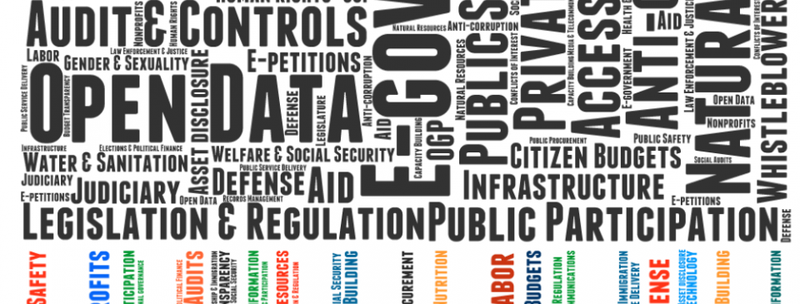What’s next for the international open government agenda?

A few weeks ago, the Open Government Partnership (OGP) held its Americas Regional Meeting in Costa Rica. In the last few years, OGP has become an important point of reference for all of us working in the open government space, and partly as a result of constant feedback and solid critique from civil society, the breadth and depth of many of the discussions taking place in San Jose have proven immensely useful.
Here’s some of our key takeaways with a few recommendations for both the partnership and the broader open government agenda.
Work with all levels of government: Different political climates require different advocacy methods — that’s a no-brainer. But what it means in practice is less evident. For most transparency advocates, engaging with all levels and branches of governments (including more than just one ministry and the legislature), and using a full arsenal of advocacy strategies (combining consensus-driven approach with reform-minded pragmatism) seems a viable way to achieve change, regardless of the political, social and economic context.
Some of the OGP countries have done a great job organizing thematic working groups around their commitments, in most cases; however, government points of contact lack both the authority and the capacity to engage with other levels of their administration. Proactive outreach from civil society to relevant government agencies and the legislature might pay off better than relying on one single entry point, but given the serious capacity issues this community faces, it is hard to decide where the focus should be. A more in-depth look at the IRM reports and the recently published datasets on commitments could be a helpful start to find basic correlation between specific advocacy strategies and implementation, and to help define regional trends and differences. Looking beyond OGP, there’s still more research to be done around what works best, and where the context-specific challenges lie. Organizations with a global presence are probably the best positioned to conduct such analysis.
Engage with a broader range of stakeholders: Real change requires a healthy transparency ecosystem, this cannot be emphasized enough. The open government agenda — especially given the enormous variety of issue areas covered — needs significant buy-in from a broader range of stakeholders (human rights advocates, environmental groups, procurement experts, etc.) to mobilize a critical mass essential for real impact. The way in which government transparency intersects with other fundamental questions of democracy, such as human rights or state secrecy, is often seen as a barrier or a distraction. However, looking beyond the topics we cover and engaging more than just the usual suspects of transparency advocates, data journalists and civic hackers might be our best bet to drive real reform. There’s a wide variety of civil society organizations, research institutes, think tanks, trade unions and private entities, for whom timely and easy access to reliable government information is as important as it is for us, having the word transparency enshrined in our mission statements.
There’s also a very strong urge to figure out how open government initiatives and innovations might become “part of the solution” for other burning societal problems, such as the lack of police accountability and criminal injustice, serious security issues (see the case of Mexico) and human rights violations, unequal access to health care and medication and many, many more. Better knowledge management on who’s already working on these issues might help local transparency advocates find out where their allies are, though it’s unclear who would have the capacities in this relatively unfunded space to coordinate such a data collection effort. (Sunlight’s NGO database might be a good start, but so far it only includes the usual suspects.)
Bridge local with international: Government reform work is too often thematically and geographically isolated. Many local groups don’t have real access to the resources (e.g. norms and standards, toolkits and guidelines, or code) the global “movement” is creating, nor the capacities to deploy them. Finding new and better ways to connect local advocates with global initiatives will be essential in the next few years to translate our global efforts into meaningful reform on the local level. The future implementation of detailed disclosure guidelines such as the Open Contracting Data Standards, launched in San Jose, will hopefully set the path for government reform in a way that is more productive and better coordinated, and OGP provides a great — though not the sole — platform for promoting these global resources. On the other hand, OGP could also help bridge international initiatives with local reform work through proactive outreach and potential reminders on important dates (such as elections, reporting deadlines, reform proposals and other advocacy opportunities).
Beyond standards and software, there are further ways in which the global can reinforce the local, and the potential of putting international pressure on countries with clearly anti-democratic procedures (such as Hungary or Azerbaijan) is yet to be explored for the open government agenda. Though its mandates are limited, OGP’s new response policy might be the first step in experimenting with such techniques, but we’ll need to think about other ways to mobilize the global community for national advocacy efforts.

